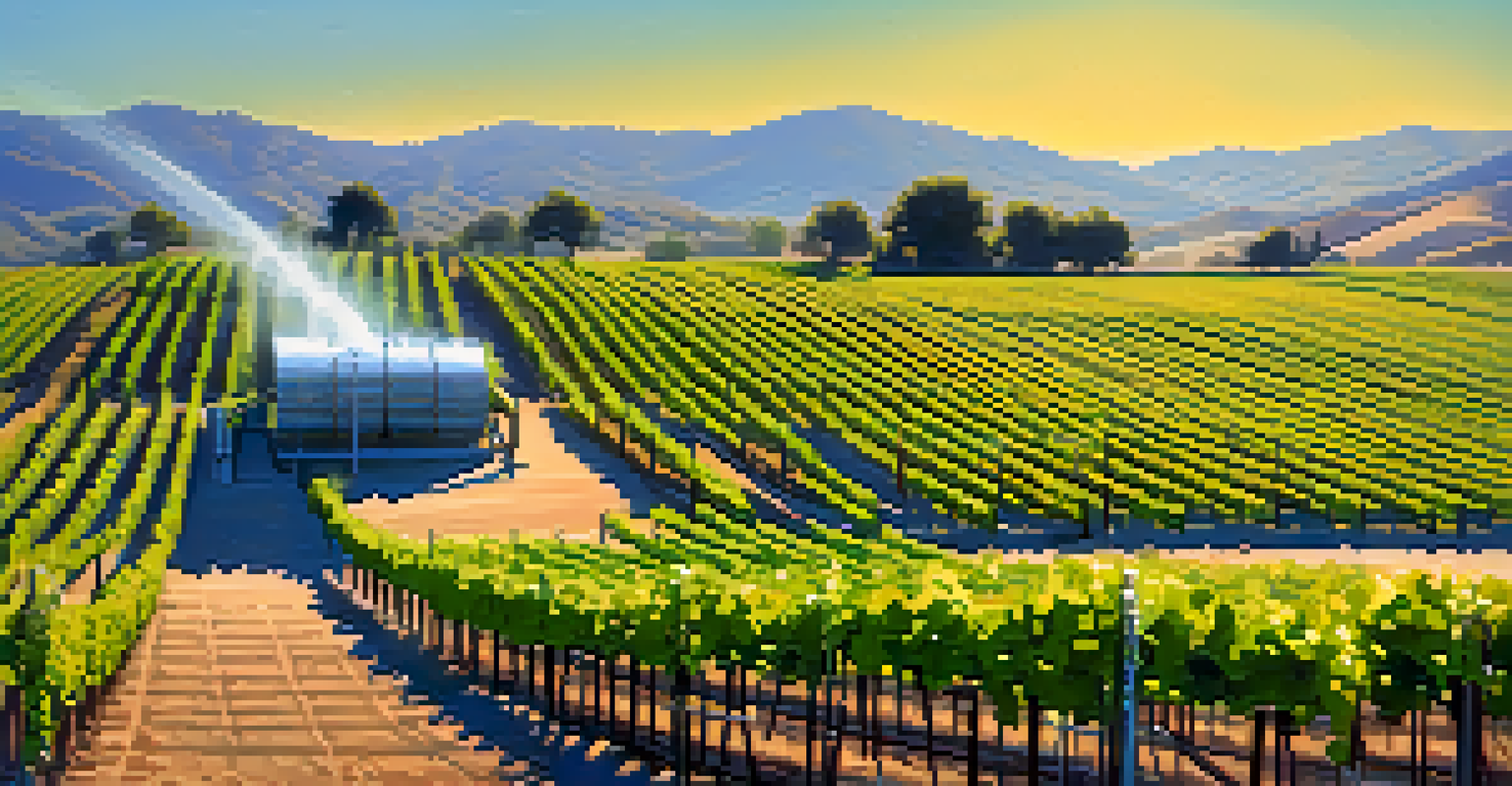Innovative Solutions for California's Water Management Crisis

Understanding California's Water Crisis: Causes and Effects
California's water crisis stems from a combination of prolonged droughts, increasing population demands, and climate change. The state has seen significant shifts in rainfall patterns, affecting water supply reliability. As a result, many communities face water shortages, leading to economic and environmental repercussions.
Water is the source of life, and if we don’t manage it wisely, we will face dire consequences.
Agriculture, a major part of California's economy, is heavily reliant on water resources. With reduced availability, farmers are forced to adapt, often leading to decreased crop yields and increased prices for consumers. This ripple effect extends to urban areas, where water restrictions and rising costs impact daily life.
Understanding these interconnected issues is crucial for developing effective solutions. By recognizing the root causes, we can better assess the innovative strategies needed to manage and conserve water resources across the state.
Rainwater Harvesting: A Simple Yet Effective Solution
Rainwater harvesting is gaining traction as a practical approach to managing water scarcity. By collecting and storing rainwater, homeowners and businesses can reduce their reliance on municipal water supplies. This method not only helps mitigate shortages but also promotes sustainability.

Many California cities are implementing incentives for rainwater collection systems, encouraging residents to install barrels or cisterns. These systems can be used for irrigation, toilet flushing, and even laundry, significantly cutting down water usage. With the right setup, a household can capture thousands of gallons each year, providing a valuable resource.
California's Water Crisis Deepens
The state's water shortages result from prolonged droughts, population growth, and climate change, affecting both rural and urban areas.
Rainwater harvesting exemplifies how small changes at the individual level can contribute to larger water conservation efforts. As more Californians adopt these practices, the cumulative impact could help alleviate some pressure on the state's dwindling water resources.
Desalination: Turning Ocean Water into Freshwater
Desalination offers a high-tech solution to California's water challenges by converting saltwater into drinkable water. This process has been used successfully in various parts of the world, and California is exploring its potential to supplement existing water supplies. While it comes with high energy costs, advancements in technology are making it more viable.
The future will be shaped by the decisions we make today about our water resources.
Several desalination plants are already operational in California, particularly in coastal areas. These facilities help provide fresh water to communities, especially during drought periods. However, they also raise concerns about environmental impacts, such as marine life disruption.
Balancing the benefits and drawbacks of desalination is key. As we innovate and improve these technologies, it’s essential to consider not just the supply of water but also its ecological implications, ensuring that we protect California's diverse ecosystems.
Smart Irrigation Technologies for Efficient Water Use
Smart irrigation systems are revolutionizing how water is used in agriculture and landscaping. By utilizing sensors and data analytics, these systems can optimize water usage based on real-time weather conditions and soil moisture levels. This means farmers and homeowners can apply just the right amount of water, avoiding waste.
For instance, drip irrigation technology delivers water directly to the plant roots, minimizing evaporation and runoff. This method is particularly useful in drought-prone regions, where every drop counts. Moreover, many urban landscapes are adopting similar technologies to maintain healthy gardens and lawns without excessive water use.
Innovative Solutions for Water Scarcity
Strategies like rainwater harvesting, desalination, and recycled water are essential for enhancing California's water sustainability.
As these technologies become more accessible and affordable, their adoption can significantly reduce California’s overall water consumption. Encouraging widespread use of smart irrigation is a critical step toward sustainable water management throughout the state.
Recycled Water: A Sustainable Resource for the Future
Recycled water is another innovative solution gaining popularity in California. This process involves treating wastewater to make it safe for various uses, such as irrigation, industrial processes, and even replenishing groundwater supplies. By repurposing water that would otherwise go to waste, communities can significantly enhance their water sustainability.
Many cities are investing in advanced treatment facilities to increase their capacity for recycling water. For example, Orange County has implemented one of the largest water recycling projects in the country, effectively turning sewage into a reliable source of water for residents and businesses.
The acceptance of recycled water is growing, especially as Californians become more aware of the benefits. By incorporating this resource into water management strategies, the state can reduce its reliance on traditional water sources, paving the way for a more sustainable future.
Community Engagement: The Key to Water Conservation
Community engagement plays a vital role in addressing California's water crisis. When residents are informed and involved, they're more likely to adopt water-saving practices and support local initiatives. Education campaigns can inform the public about the importance of water conservation and provide practical tips for reducing usage at home.
Local organizations and governments can host workshops, provide resources, and create incentives for water-efficient practices. For instance, offering rebates for water-saving appliances or landscaping can motivate people to make changes. Additionally, sharing success stories from within the community can inspire others to join the effort.
Community Engagement is Crucial
Involving residents in water conservation efforts through education and incentives can significantly impact California's water management.
Ultimately, fostering a culture of conservation requires collaboration among residents, businesses, and policymakers. By working together, communities can develop innovative solutions tailored to their specific needs and ensure a sustainable water future for California.
Policy Changes: Supporting Innovative Water Solutions
Effective policies are essential for supporting innovative water management solutions in California. Policymakers must recognize the urgency of the water crisis and create frameworks that encourage investment in sustainable technologies. This includes funding for research, development, and implementation of new water-saving strategies.
Moreover, regulations should promote responsible water usage across all sectors, including agriculture, industry, and urban development. By setting clear guidelines and goals, the state can drive innovation and accountability, ensuring that everyone plays a part in the water conservation effort.

As California navigates its water challenges, collaboration between governmental agencies, businesses, and communities will be crucial. By fostering an environment where innovative solutions can thrive, California can pave the way for a more resilient and sustainable water future.